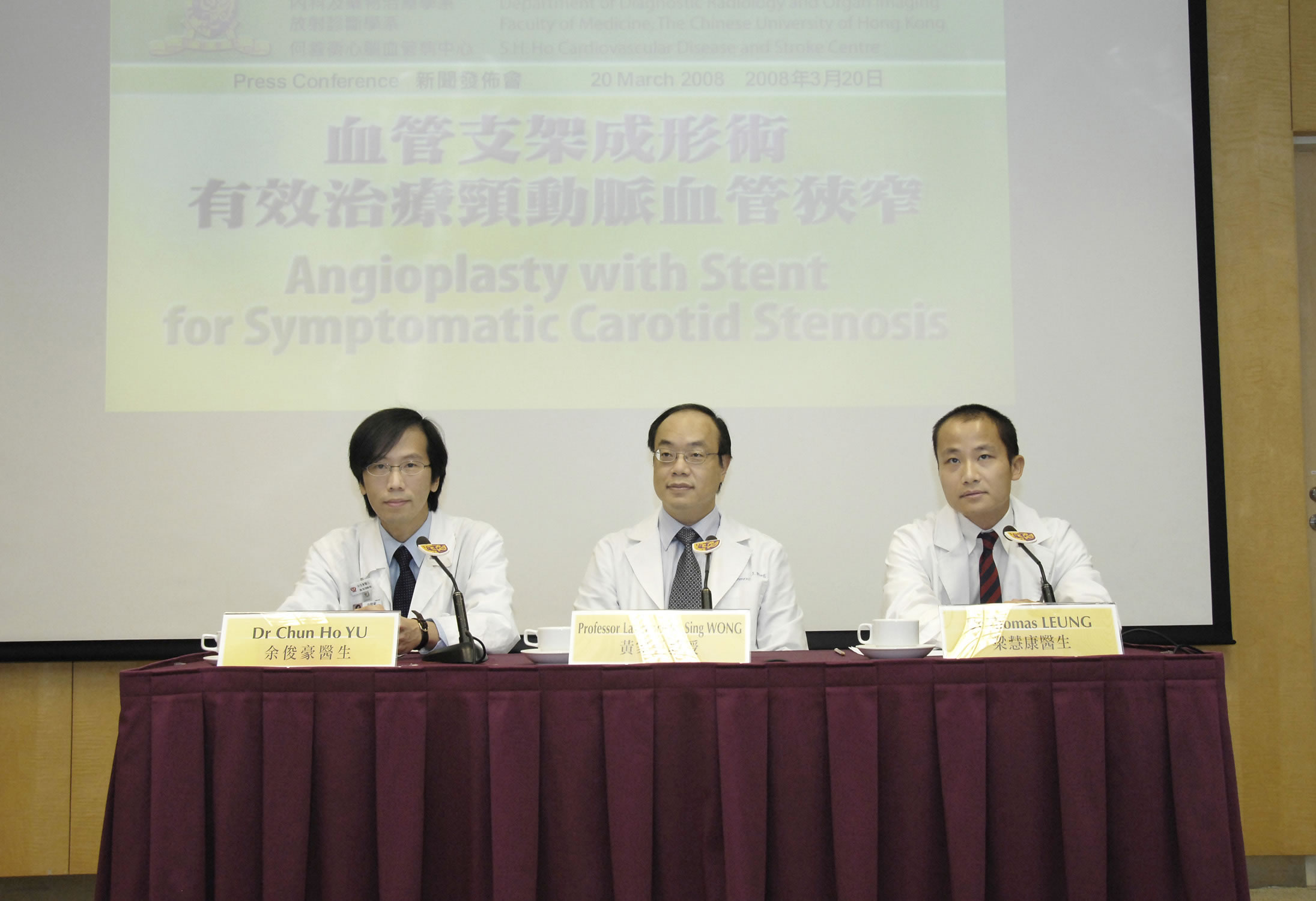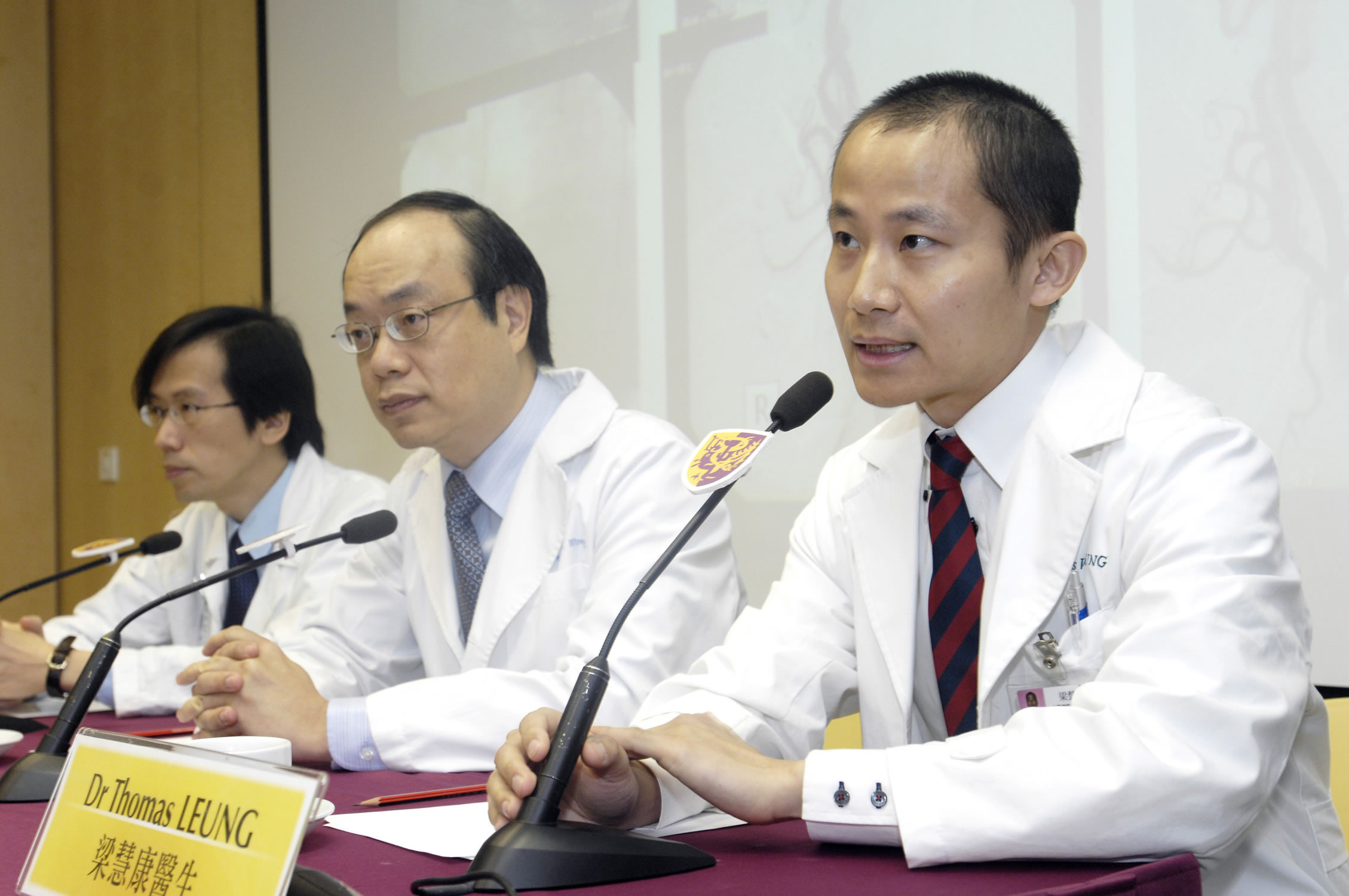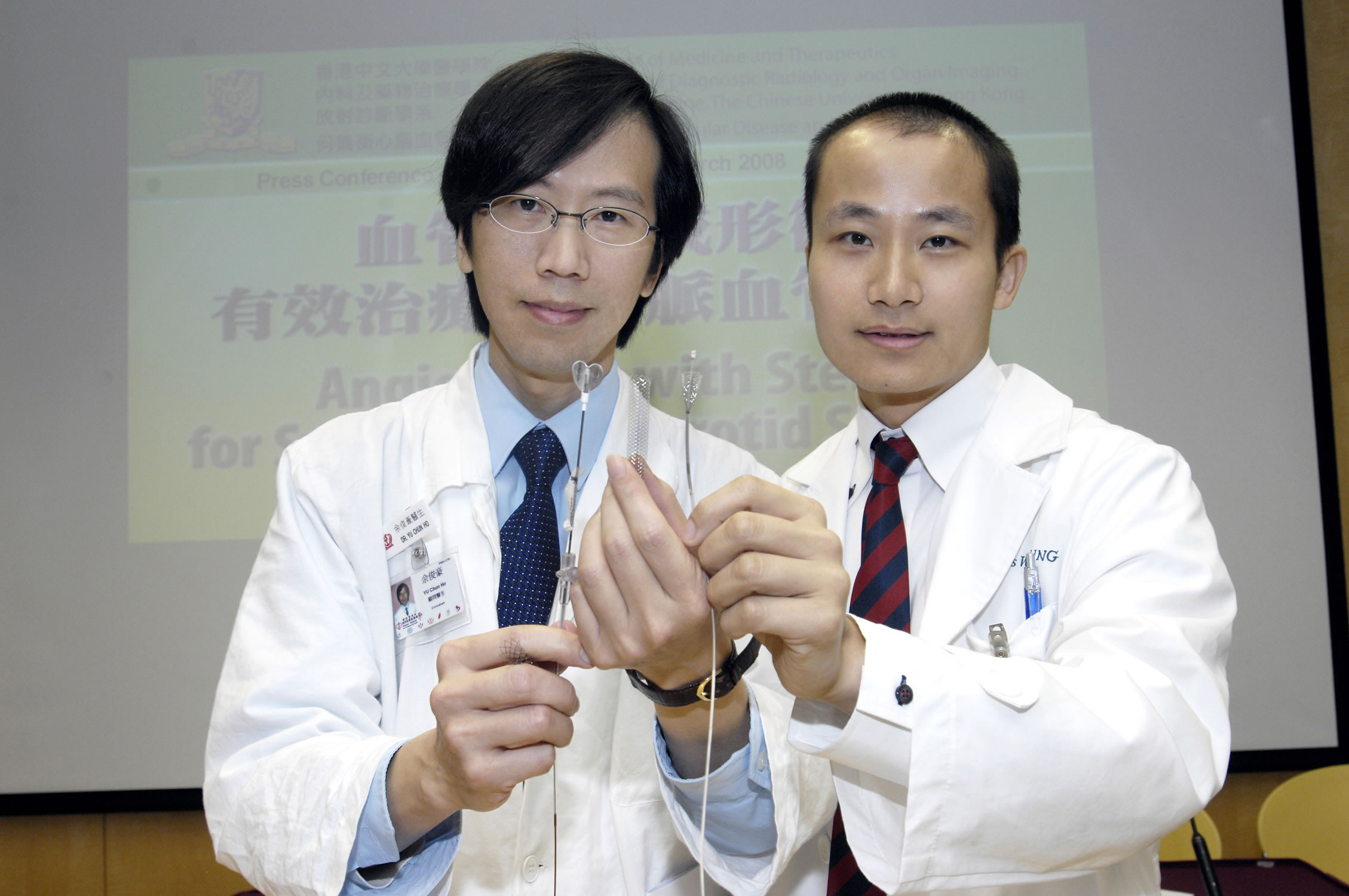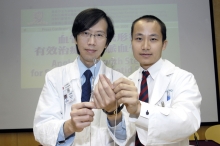News Centre
Angioplasty with Stent for Symptomatic Carotid Stenosis
Stroke is the most common cause of adult disability and a top leading cause of death in Hong Kong. Over the years, the mainstay of treatment for stroke has been confined to drug therapy. However, pharmaco-therapy fails in a significant proportion of patients. One important reason for drug refractoriness and stroke relapse is critical stenosis of arteries supplying the brain which cannot be readily reversed by drug therapy.
Stent-assisted angioplasty has evolved as a re-vascularization procedure to restore cerebral perfusion. Neuro-vascular lesions which had very guarded prognosis and are not treatable by open surgery are now amendable to minimally invasive procedures gaining promising results. From large supra-aortic arteries to minute intra-cranial arteries can now be accessed through a 5mm incision at the groin under local anesthesia without having a cut on the head or neck.
Since February 2006, 120 carotid artery stenting procedures have been performed in the Prince of Wales Hospital by researchers of the Department of Medicine and Therapeutics, Department of Diagnostic Radiology and Organ Imaging and S.H. Ho Cardiovascular Disease and Stroke Centre at The Chinese University of Hong Kong. The 30-day peri-operative morbidity and mortality rate was 3.4% which compared favorably with traditional open surgery (6%). Importantly, endovascular approach allows treatment in patients who are not suitable for open surgery due to reasons of post-radiotherapy stenosis, contralateral carotid artery occlusion, post-endarectomy restenosis, concurrent significant co-morbidities, and inaccessible anatomical site. Patients with bilateral carotid artery stenosis or concomitant coronary artery disease can now be treated by the same approach during the same session. The absence of neck wound, risk of general anesthesia or facial nerve injury are additional advantages. In general, each procedure would last for 2 hours. Patient would stay in hospital for 2-3 days after the procedure, and resumed normal daily activity in 5 days.
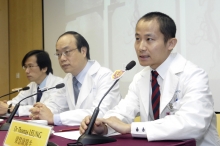
From left: Dr Chun Ho YU, Honorary Clinical Associate Professor, Department of Diagnostic Radiology and Organ Imaging, CUHK, Professor Lawrence Ka Sing WONG, Mok Hing Yiu Professor of Medicine, Department of Medicine and Therapeutics, CUHK, and Dr Thomas Wai Hong LEUNG, Assistant Professor, Department of Medicine and Therapeutics, CUHK
